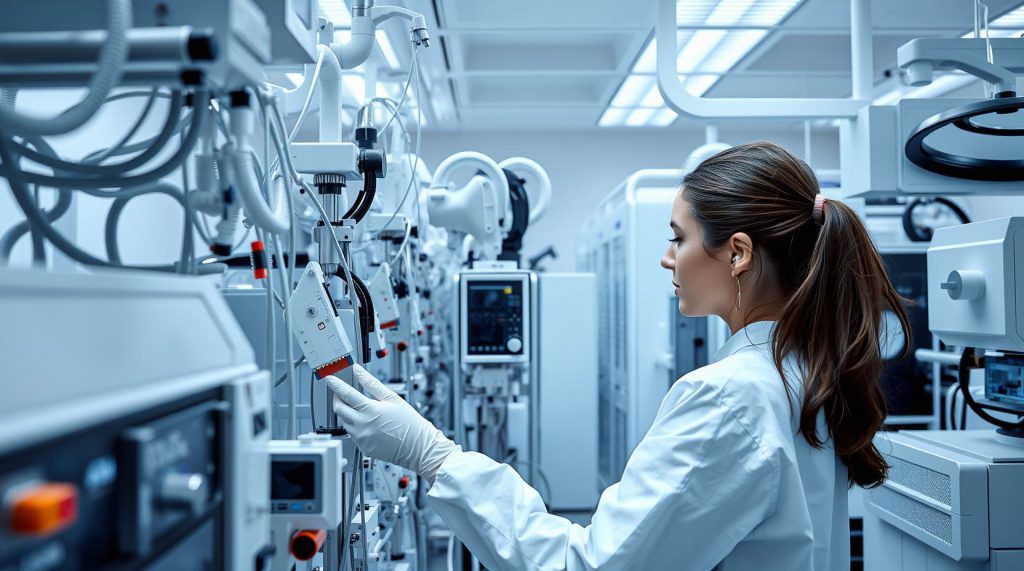The Benefits of Preventive Maintenance for Medical Equipment
ArticleMedical equipment plays a critical role in healthcare, supporting diagnostics, treatment, and patient care. Preventive maintenance is essential for ensuring this equipment remains reliable, safe, and effective. Regular maintenance can minimize breakdowns, reduce costly repairs, and extend the lifespan of medical devices. This guide outlines the benefits of preventive care for medical devices and offers maintenance tips to keep them functioning optimally in healthcare settings.
Medical Equipment Maintenance Tips
Maintaining medical equipment requires a combination of routine checks, cleaning, and testing. Establish a checklist for each type of device, including visual inspections, functionality tests, and calibration checks. Use manufacturer-provided manuals for specific guidelines on servicing and care. Routine cleaning and lubrication of moving parts also help prevent wear and tear. Document each maintenance task, including inspection dates and any issues found, to track equipment performance and identify patterns that may indicate recurring problems.
Preventive Care for Medical Devices
Preventive care for medical devices includes proactive inspections and maintenance activities to keep equipment running smoothly and prevent unexpected failures. Regular inspections help detect issues early, while scheduled maintenance reduces downtime and keeps equipment ready for use. Preventive care can range from simple tasks like replacing filters to more complex activities like recalibrating imaging devices. Preventive care programs ensure devices are consistently functional and safe for both patients and healthcare providers.
Common Medical Equipment Issues
Medical equipment can encounter various issues, including calibration drift, component wear, and sensor failures. Some devices, like patient monitors, may suffer from battery or power supply problems, while imaging equipment may experience cooling system malfunctions. These issues can lead to inaccurate readings or even device failure, jeopardizing patient safety. Identifying and addressing common issues through regular maintenance reduces the likelihood of major repairs and extends the equipment’s lifespan.
Repairing Medical Devices 101
Repairing medical devices requires specialized knowledge and tools, often best handled by certified technicians. However, understanding the basics can be helpful. Minor repairs may include replacing worn components like tubing or filters, while more complex issues, such as software malfunctions or mechanical breakdowns, require expert intervention. When performing repairs, always follow manufacturer guidelines and use authorized parts to maintain the device’s integrity and safety standards.
How to Maintain Medical Equipment
Proper maintenance includes cleaning, testing, and monitoring device performance. Start by developing a maintenance plan that aligns with manufacturer recommendations and the facility’s usage patterns. Conduct regular inspections for signs of wear, such as cracks, corrosion, or loose connections. Calibration is also essential, particularly for diagnostic equipment, to ensure accuracy. Lastly, train staff on proper usage to minimize misuse, which can lead to unnecessary wear or malfunctions.
Medical Equipment Maintenance Schedule
Establishing a maintenance schedule is crucial for consistency. Schedules vary depending on the device’s type, usage frequency, and manufacturer guidelines. For example, high-use equipment like ventilators may require weekly checks, while other devices, like imaging machines, might need monthly or quarterly servicing. Scheduling preventive maintenance ensures each piece of equipment receives timely attention, reducing the risk of failure and improving reliability.

Importance of Preventive Maintenance in Healthcare
Preventive maintenance in healthcare is vital for ensuring patient safety, maintaining equipment accuracy, and avoiding unplanned downtime. Inconsistent or inadequate maintenance can result in inaccurate readings, misdiagnoses, or equipment failure during critical situations. Preventive maintenance not only enhances patient care but also supports compliance with regulatory standards and minimizes liability risks for healthcare facilities. Reliable equipment is essential to provide continuous, quality care to patients.
Troubleshooting Medical Equipment
Effective troubleshooting involves a systematic approach to identifying and resolving equipment issues. Begin by observing symptoms, such as unusual noises, error messages, or performance inconsistencies. Refer to the device’s manual for troubleshooting steps, and check for simple problems like loose connections or dead batteries. For complex issues, consult a technician or use diagnostic tools if available. Regular troubleshooting skills can help staff address minor issues quickly, ensuring minimal disruption to patient care.
Cleaning Medical Devices Properly
Proper cleaning of medical devices is crucial for both functionality and infection control. Follow manufacturer guidelines for cleaning materials and methods, as some components may be sensitive to certain chemicals. Use disinfectants recommended for healthcare settings, and always wear gloves and appropriate protective gear when handling equipment. Thorough cleaning prevents contamination, maintains device accuracy, and protects sensitive components from damage. Regular cleaning routines contribute to equipment longevity and patient safety.
Benefits of Regular Medical Equipment Checks
Regular equipment checks offer numerous benefits, including improved accuracy, safety, and operational efficiency. Routine checks help identify potential issues before they escalate, saving costs on repairs and reducing the likelihood of emergency replacements. Equipment that undergoes regular checks tends to have a longer lifespan, lowering overall equipment costs for healthcare facilities. Additionally, well-maintained devices improve patient outcomes by ensuring reliable, accurate diagnostics and treatments.
In conclusion, preventive maintenance for medical equipment is essential for enhancing reliability, reducing repair costs, and ensuring patient safety. By following regular maintenance schedules, practicing proper cleaning, and troubleshooting issues promptly, healthcare facilities can maximize the lifespan and performance of their equipment. A proactive approach to maintenance is a wise investment in the quality and efficiency of patient care, benefiting both healthcare providers and those they serve.
